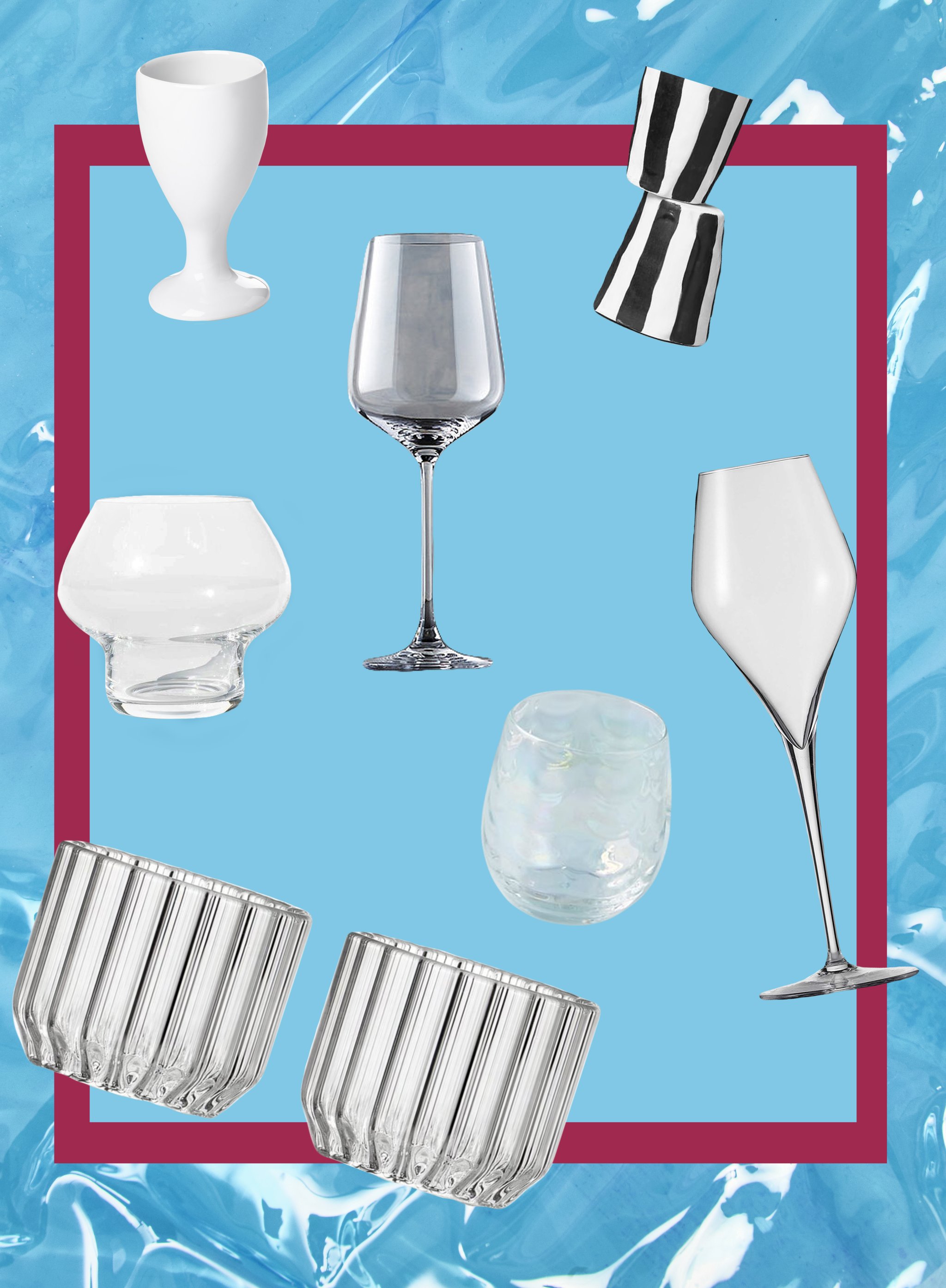We may earn revenue from the products available on this page and participate in affiliate programs.
The wine game has been shaken up as of late: Natural wines have confidently burst onto the scene, offering smaller-batch varietals with funkier notes. Casual drinkers continue to skew younger, while subscription services fine-tune the process of tasting and buying. And on the most innovative end of the spectrum, restaurants like Japan’s Vineria iL Passaggio offer a customized pairing experience, matching wines to unique vessels (ever sipped wine from a plate?). With all this newness, we had to wonder if glassware manufacturers were catching on.
One online search presented us with more glassware options than there are varietals: stemless, porcelain, painted, and beyond—each unconventional and more intriguing than the next. But is there something to be said for the classics? We approached two wine connoisseurs to get the scoop on the essential components of a well-rounded glass cupboard, whether you’re new to the scene or fancy yourself an amateur vintner.
Three’s Company
Claire Coppi, the CMS-certified sommelier and manager of Mirabelle Wine Bar, asserts that three distinct glasses can make up a well-stocked wine cabinet. “The Burgundy glass, which has a much larger, rounded bowl, is for delicate reds, like Pinot Noir or Gamay, as well as richer whites, like Chardonnay or Viognier,” she says. “The Bordeaux glass is thinner and taller for larger, structured reds, like Cabernet Sauvignon or Malbec, as well as crisp, lean whites, like Sauvignon Blanc or Riesling. And lastly, it’s always nice to have a set of Champagne flutes.”
Both Coppi and Raquel Royers, blogger and certified wine specialist, cop to sipping champagne from Burgundy glasses, which give it more room to develop. If you are a champagne snob, Coppi does have some advice: “The best style of Champagne flute is tulip-shaped. The swelling around the middle offers room to open up, while the tapered mouth traps carbon dioxide and preserves bubbles.”
The Traditional Picks:
To Stem or Not to Stem
For Coppi, a stem is necessary to keep wine at the optimum temperature (around 65 degrees for red and 55 for white). Hands can quickly warm a chilled white and even dull a red wine.
Royers also prefers a stem for temperature maintenance as well as a more controlled swirl. Side note: The swirl introduces oxygen into the wine, allowing ethanol vapors, which carry the aromatic compounds, to release. Royers elaborates, however, that stemless glassware can inject personality into a casual get-together and read a little more playful.
The Unconventional Picks:
Glass Is Where It’s At
While countless outlets hock tinted and opaque options, there’s a reason we typically sip our vino from transparent vessels. Coppi explains, “in general, seeing the color and concentration is part of the experience of smelling, tasting, and enjoying it.” Secondly, glass is nonporous, unlike ceramic, which can hold the flavor of past liquids.
A playful, painted, or porcelain glass can certainly make its way into your collection, though, especially if you’re a casual wine drinker who cares more about flavor than color. And as far as thickness goes, that’s a matter of personal preference. Lastly, if you’re imbibing somewhere precarious—on a boat or in a pool, for example—Royers gives you the go-ahead to pass up glass for plastic.
The Unconventional Picks:
A Short Shelf Life
Ok, you’ve stocked your cabinet and are ready to indulge; how long do you have to drink a freshly uncorked bottle? Both Royers and Coppi advise finishing a bottle within a few days (max). In the meantime, they recommend storing both white and red whites in the refrigerator overnight. Coppi even takes an extra step, pumping her bottle with the Vacu Vin to stall oxidation.
One last thing to keep in mind: In the absence of excessive sulfites, natural wine spoils quicker, while fortified and dessert wines will last a few months in the fridge.
Discover more entertaining tips we swear by: The 3 Keys to an Epic Dinner Party How to Actually Store Your Wine 11 Ways to Drink Wine (Other Than Straight Out of the Bottle)
